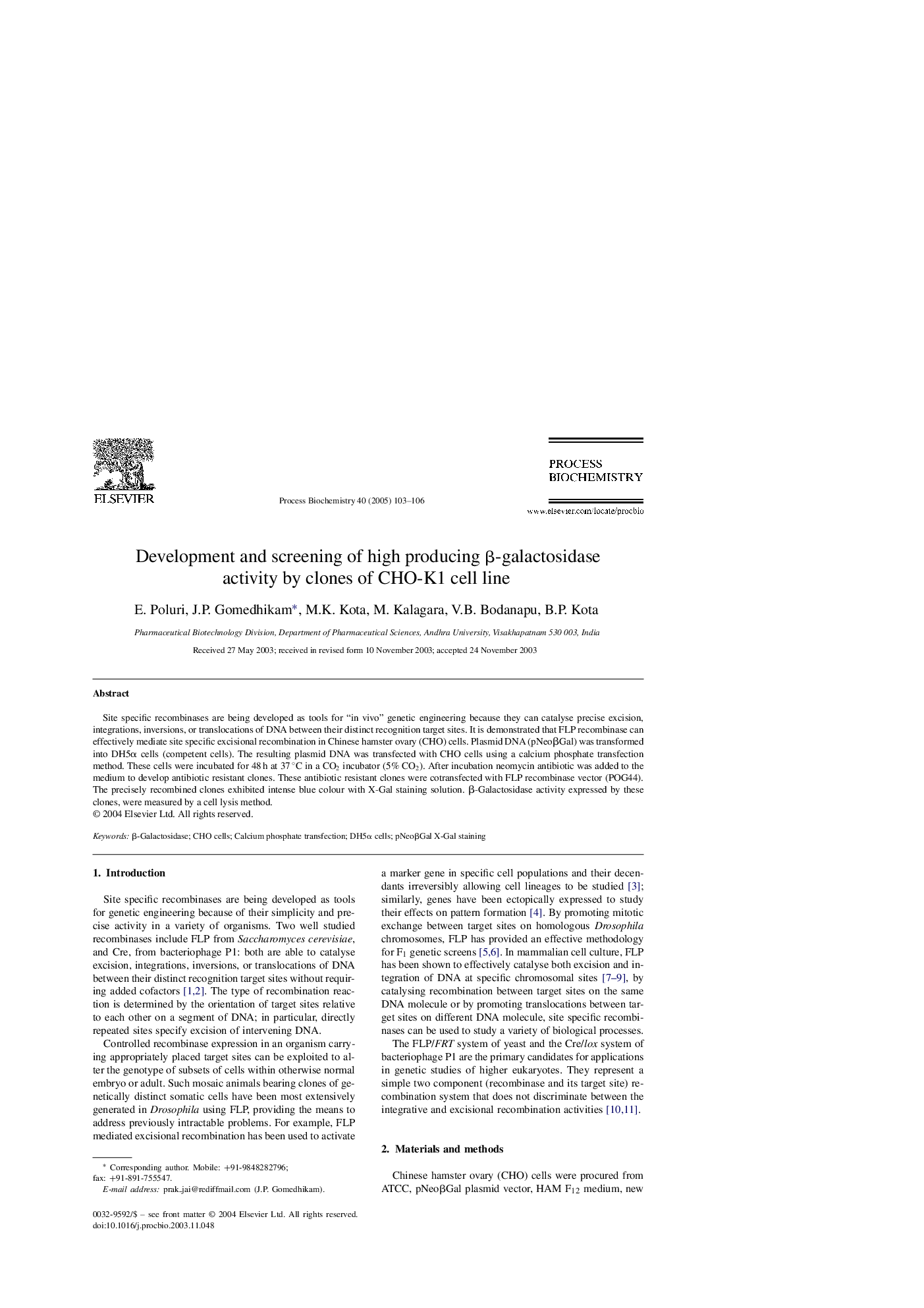| Article ID | Journal | Published Year | Pages | File Type |
|---|---|---|---|---|
| 10236163 | Process Biochemistry | 2005 | 4 Pages |
Abstract
Site specific recombinases are being developed as tools for “in vivo” genetic engineering because they can catalyse precise excision, integrations, inversions, or translocations of DNA between their distinct recognition target sites. It is demonstrated that FLP recombinase can effectively mediate site specific excisional recombination in Chinese hamster ovary (CHO) cells. Plasmid DNA (pNeoβGal) was transformed into DH5α cells (competent cells). The resulting plasmid DNA was transfected with CHO cells using a calcium phosphate transfection method. These cells were incubated for 48 h at 37 °C in a CO2 incubator (5% CO2). After incubation neomycin antibiotic was added to the medium to develop antibiotic resistant clones. These antibiotic resistant clones were cotransfected with FLP recombinase vector (POG44). The precisely recombined clones exhibited intense blue colour with X-Gal staining solution. β-Galactosidase activity expressed by these clones, were measured by a cell lysis method.
Keywords
Related Topics
Physical Sciences and Engineering
Chemical Engineering
Bioengineering
Authors
E. Poluri, J.P. Gomedhikam, M.K. Kota, M. Kalagara, V.B. Bodanapu, B.P. Kota,
